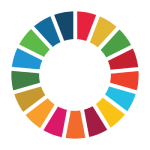Learning Literacy and Numeracy through cooking

Campus Teaching activities are part of the Merdeka Campus program, which provides learning opportunities and self-development outside the classroom. This activity involves university students becoming teachers, and selected students will be placed in elementary schools in need. One of the UNY students who could participate was Aisyatunnisai Tawakal. The physics education student at the Faculty of Mathematics and Natural Sciences UNY was assigned at SDN Danupan Temanggung, Central Java.
At this school, Aisya tries to apply the literacy and numeracy learning she got during the campus teaching briefing to the theme of entrepreneurship by holding a cooking class for grade 5 students. Aisya divides her class into five groups according to health protocols, with two groups cook fried rice, two groups cook healthy dishes.; and one group cook noodles.
During the cooking session, the students actively read and understood each other's recipes. “In this activity, students apply literacy by reading recipes. In addition, they also learn to count and measure the ingredients needed for cooking, such as weighing or measuring ingredients,” she said.
Before practicing the cooking class, Aisya also did not forget to teach students about the nutritional value of the food they will process. According to her, students are also provided with entrepreneurship skills with knowledge of managing money and target business opportunities in the culinary field with this cooking class.
At this school, Aisya is assisted by other Teaching Campus students, namely Harnum Rukmana Ningrum (Universitas Muhammadiyah Magelang), Galuh Anggita Vikasari (Universitas Sebelas Maret), Melania Iko Permatasari (Universitas Ahmad Dahlan), Anitya Setya Wardani (Universitas Mercu Buana) and Devi Nurul Amalia and Muhammad Naufal Gibran Efendi (UNY).
Melania Iko Permatasari said that literacy and numeracy learning in this cooking class was carried out in several stages. First, the students got a list of foodstuffs to be bought in groups. At this stage, students may share assignments or buy cooking ingredients together. “After that, we asked them to provide a label containing the price of each item they bought. From here, they will learn to write numbers and how to manage the money that goes into numeracy learning,” Melania said.
Harnum Rukmana.Ningrum said that several groups did not yet have the ingredients to cook before starting to cook, while several other groups had ingredients that the group did not need. "We deliberately set this so that barter occurs according to the price of each item," she said. Through this activity, students directly learn about barter as a trading system. The students exchanged materials with the conditions according to the price listed on the label. (Dedy, Tj.Lak)






